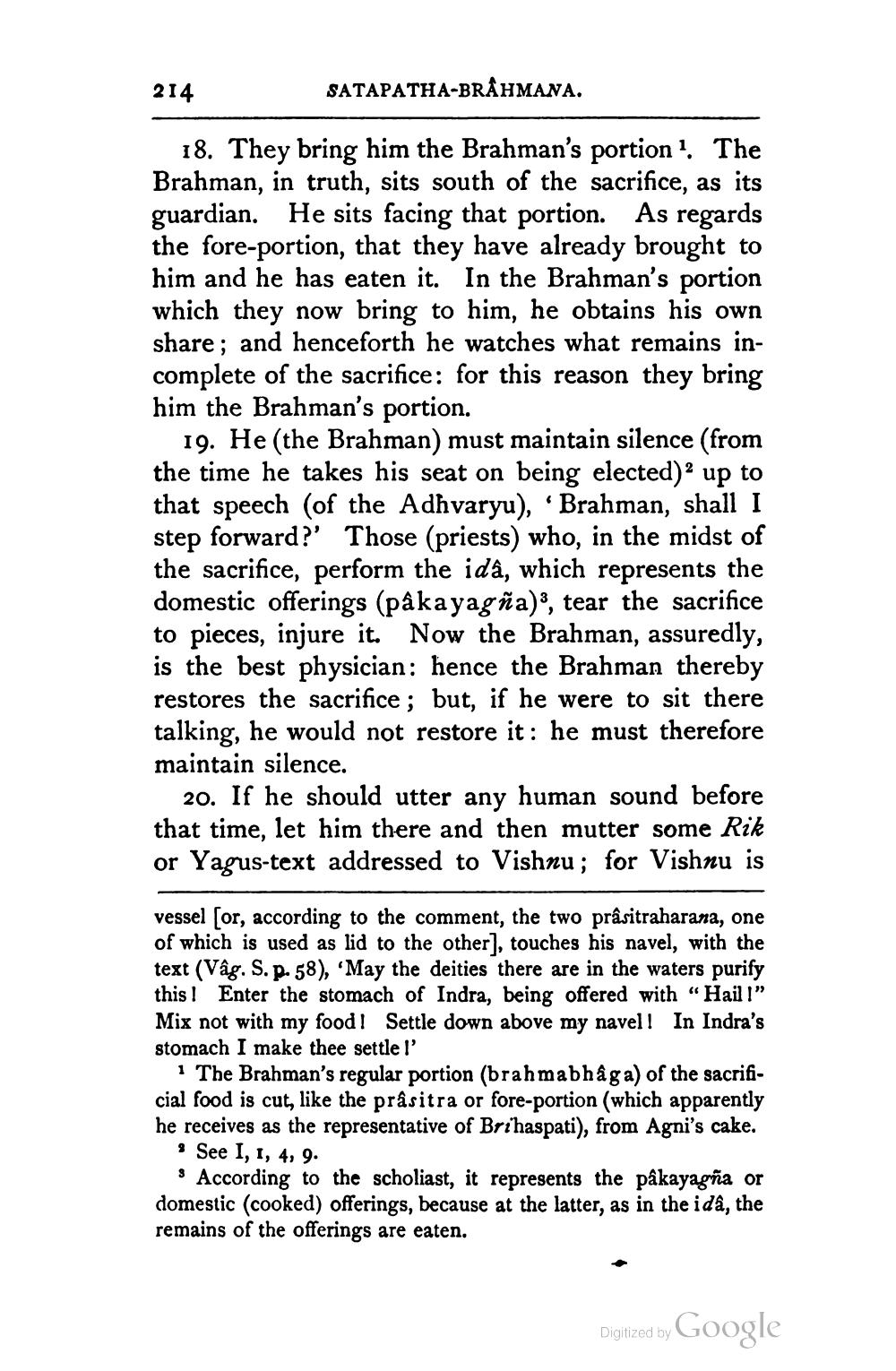________________
SATAPATHA-BRAHMANA.
18. They bring him the Brahman's portion1. The Brahman, in truth, sits south of the sacrifice, as its guardian. He sits facing that portion. As regards the fore-portion, that they have already brought to him and he has eaten it. In the Brahman's portion which they now bring to him, he obtains his own share; and henceforth he watches what remains incomplete of the sacrifice: for this reason they bring him the Brahman's portion.
214
19. He (the Brahman) must maintain silence (from the time he takes his seat on being elected)2 up to that speech (of the Adhvaryu), 'Brahman, shall I step forward?' Those (priests) who, in the midst of the sacrifice, perform the idâ, which represents the domestic offerings (pâkayagña)3, tear the sacrifice to pieces, injure it. Now the Brahman, assuredly, is the best physician: hence the Brahman thereby restores the sacrifice; but, if he were to sit there talking, he would not restore it: he must therefore maintain silence.
20. If he should utter any human sound before that time, let him there and then mutter some Rik or Yagus-text addressed to Vishnu; for Vishnu is
vessel [or, according to the comment, the two prâsitraharana, one of which is used as lid to the other], touches his navel, with the text (Vâg. S. p. 58), 'May the deities there are in the waters purify this! Enter the stomach of Indra, being offered with "Hail!" Mix not with my food! Settle down above my navel! In Indra's stomach I make thee settle l'
1 The Brahman's regular portion (brahmabhaga) of the sacrificial food is cut, like the prâsitra or fore-portion (which apparently he receives as the representative of Brihaspati), from Agni's cake.
See I, 1, 4, 9.
According to the scholiast, it represents the pâkayagña or domestic (cooked) offerings, because at the latter, as in the idâ, the remains of the offerings are eaten.
Google
Digitized by




